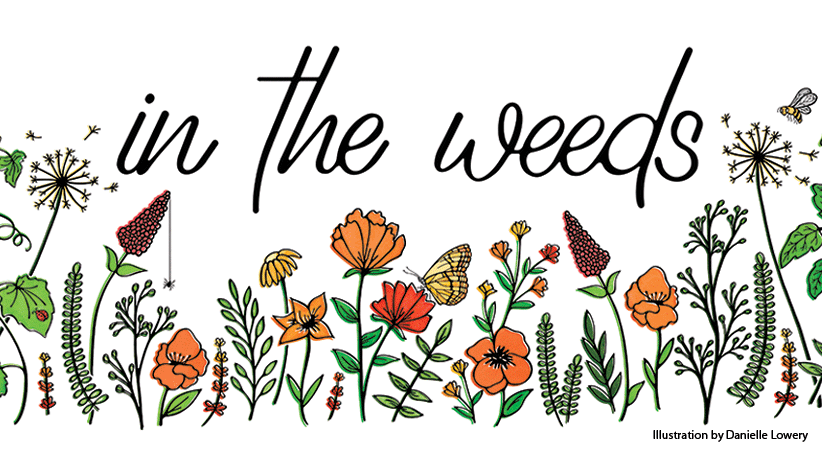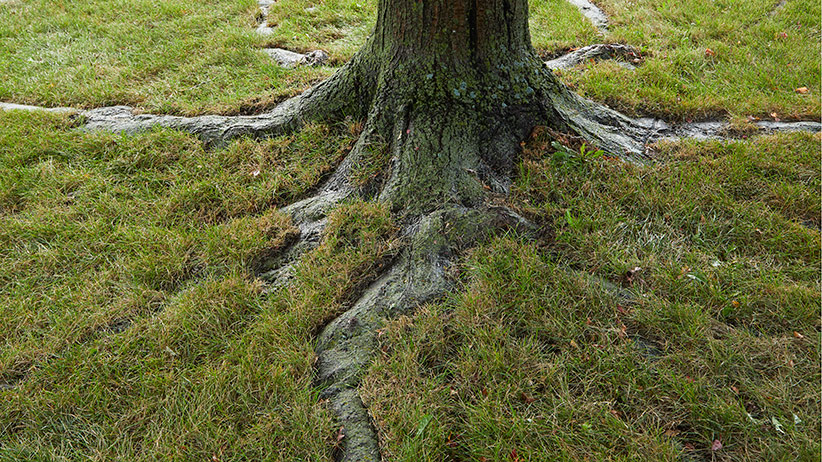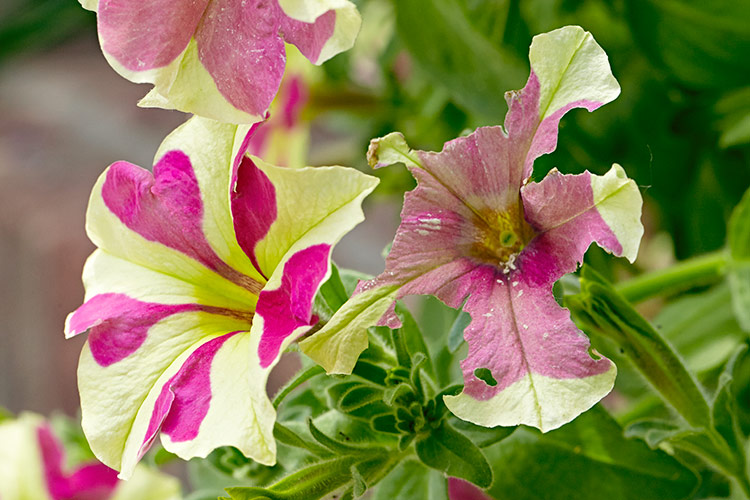
Garden pests that cause damage in the garden
Squirm at the mention of anything that creeps or crawls? Insects can cause a lot of damage to your plants, and, without proper controls, weaken their health to the point of no return. But while some bugs need to be kept in check, there are others that are huge garden helpers. And remember to go easy on chemical insecticides. They may treat the insect pests you have, but they’ll wipe out the hard workers, too.
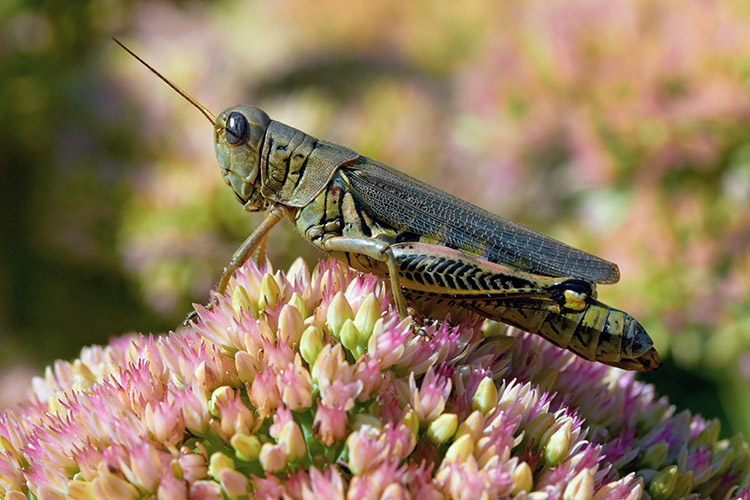
Grasshopper
Grasshopper’s favorite plants
From vegetables and fruit trees to flowers, grasshoppers aren’t picky eaters.
What type of damage will grasshoppers cause
Blooms and foliage will look tattered, but a big outbreak can defoliate plants or ruin fruits and vegetables throughout the summer, decreasing your potential harvest later in the season.
How to control grasshoppers
There are pesticides and beneficial pathogens that cause disease in grasshoppers, but they’re hard to use because they have to come in contact with the insect to work, and new grasshoppers are always moving in. Cover important plants or crops with floating row cover or a fine wire mesh. Along with larger beneficial insects, such as the praying mantis, chickens make excellent natural controls.
You Might Also Like:
7 Clever Ways to Upcycle Plastic Bottles in the Garden
Common Garden Diseases
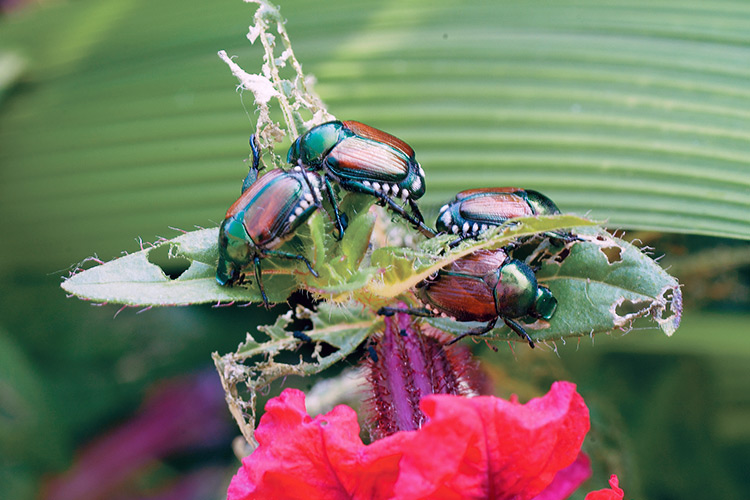
Japanese beetles
Japanese beetles’ favorite plants
Clematis (Clematis spp. and hybrids), dahlia (Dahlia hybrids), rose (Rosa spp. and hybrids), and Japanese maple (Acer palmatum), to name just a few.
What type of damage Japanese beetles cause
Gnawed and ragged flower petals and almost entirely defoliated plants; grubs can be just as destructive, eating the roots of turf in spring and late summer.
How to control Japanese beetles
Pluck or shake beetles off of plants early in the morning, and drop into soapy water. Systemic insecticides, such as those containing imidacloprid or thiamethoxam, give long-term protection, and contact insecticides like carbaryl, sold as Sevin®, can be applied as a spray or dust. Late spring to early fall, when grubs are near the soil’s surface, apply a control that contains imidacloprid or halofenozide.
Want an organic control? Milky spore, a bacteria you mix with water and sprinkle on the lawn, has killed grubs in some regions.
Learn more about Japanese beetles and their life cycle
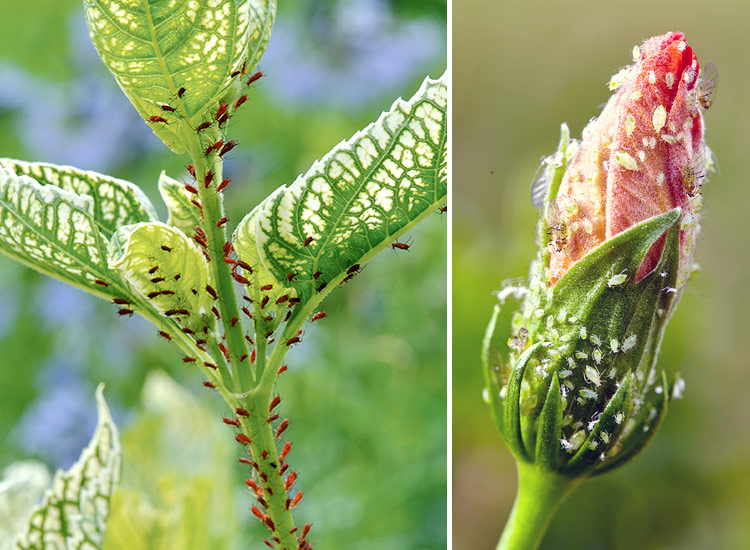
Aphids
Aphids’ favorite plants
There are thousands of different aphid species, but most pierce and suck sap from a specific kind of herbaceous or woody plant, such as rose (Rosa spp. and hybrids) and juniper (Juniperus chinensis). Other annuals and perennials like zinnia (Zinnia spp. and hybrids) aren’t safe, either.
What type of damage do aphids cause?
Stunted growth and leaf curling, distortion or yellowing; the honeydew (sticky, undigested sap) aphids produce promotes the growth of sooty mold, a black fungus that forms on plants and nearby surfaces, and they also spread viral diseases from plant to plant.
How to control aphids
Knock them off with a strong jet of water or spray the insects thoroughly with insecticidal soap. You can also prune off infected stems and dispose of them in the trash.
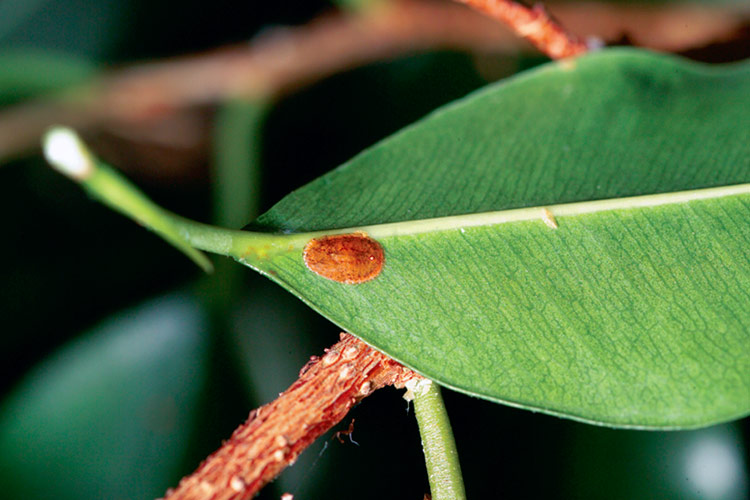
Scale
Scale’s favorite plants
More than 200 species of these sap-sucking insects attack many shrubs and trees (including evergreen, deciduous and fruit).
What damage does scale cause?
Crawlers hatch in late spring and move around briefly before they attach to a leaf or stem to suck sap from tender growth. Leaves turn yellow and drop. Usually damage is minimal for mature trees but can stunt or kill young ones. Scale insects also secrete sticky honeydew.
How to control scale
Lady beetles, parasitic wasps and soldier beetles all feed on scale. For smaller numbers, remove the adults with a cotton swab dipped in soapy water or rubbing alcohol or blast them off with your garden hose. Suffocate adults and eggs by spraying with horticultural oil while the plant is dormant. Cut back and destroy any branches with heavy infestations.
Leafhoppers
Adult leafhoppers are 1/8 to 1/4-inch long, slender and hold their wings rooflike over their backs.
Leafhoppers’ favorite plants
A wide variety, including grasses, vegetables and herbaceous and woody plants.
What damage do leafhoppers cause?
Adults and nymphs feed on plant sap in leaves and stems throughout the growing season. A toxin they inject often causes white or yellow stippling on leaves before they curl and fall off. They feed by sucking chlorophyll from tree leaves, which creates a white stippling. They can also spread viruses and bacteria as they move from plant to plant.
How to control leafhoppers
Birds and lizards prey on leafhoppers, so small populations aren’t usually a big problem. Spray insecticidal soap on all surfaces of plants, including the undersides of leaves, to kill larger infestations.
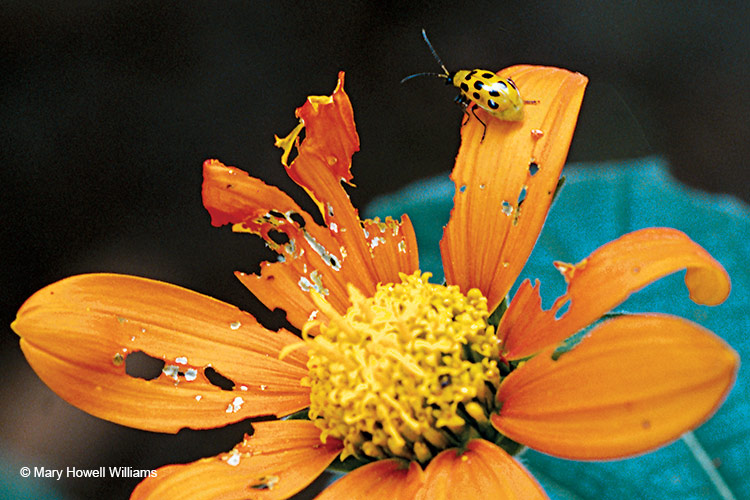
Spotted cucumber beetles
Spotted cucumber beetles’ favorite plants
Most any type of flower; also beans, tomatoes, cucumbers, melons and other edibles.
What type of damage to cucumber beetles cause?
Adults chew irregular holes in flowers, leaves and fruit from summer to fall, and larvae (known as Southern corn root-worm) often transmit bacterial wilt disease.
In addition to chewing holes, the adult cucumber beetle can carry bacterial wilt and cucumber mosaic virus, both of which quickly kill plants.
How to control spotted cucumber beetles
Mix up and water beneficial nematodes into the soil late in the day in midsummer to control the larvae. To get rid of beetles, grow plants that attract natural predators, such as braconid wasps.

Tobacco budworm
Tobacco budworm’s favorite plants
Petunia (Petunia hybrids), flowering tobacco (Nicotiana spp. and hybrids), scented geranium (Pelargonium hybrids) and mum (Chrysanthemum spp. and hybrids), to name a few.
What type of damage do tobacco budworms cause?
Larvae tunnel into or eat entire flower buds, petals and leaf buds; most caterpillars appear in late summer.
How to control tobacco budworms
Handpick caterpillars around dusk, when they’re least active. Buy beneficial insects, such as green lacewing larvae and lady beetles, from sources like www.gardensalive.com or www.gardeningzone.com.
Release insects on calm days in late spring (either in early morning or evening). Or mix up and spray plants with pyrethroid insecticides until leaves are dripping. These chemicals attack all stages of the insect.










